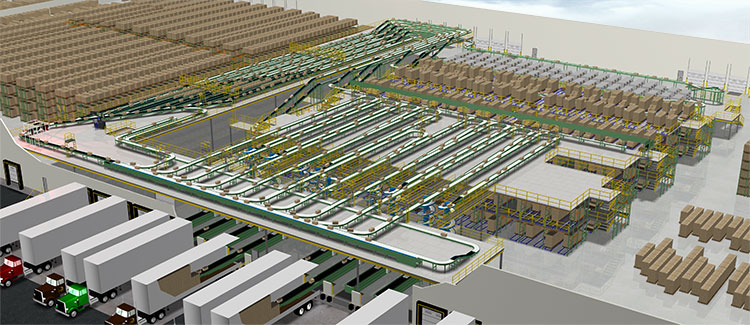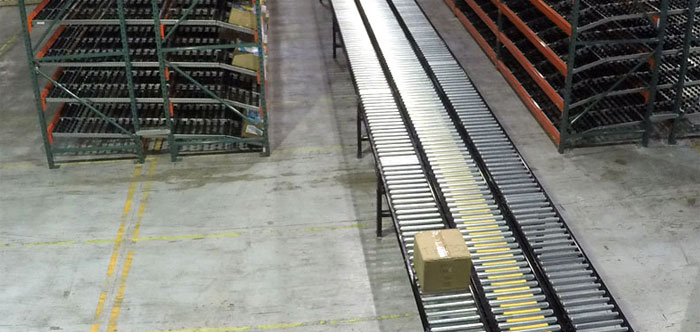Table Of Content

Investing in a high-quality conveyor belt is only the first step in ensuring your business operates efficiently. As such, it’s essential to take steps to maintain your conveyor belt over time to maximize its lifespan and keep it running smoothly. Regular conveyor belts are typically made from less durable materials such as PVC or nylon. They may also lack additional stabilizing features like metal fasteners on the edges, meaning they can be prone to warping or slipping during operation. A conveyor belt’s function is to move objects from Point A to Point B with minimal effort. The conveyor belt pace, direction, curvature and size varies based on the needs of the user.
Supply Chain Solutions
It’s a good option if you have little to no interest in speeding up or slowing down the conveyor. He started with Design News in 2002 as a freelancer and hired on full-time in 2011. Without further ado, let’s explore factors to consider when evaluating and selecting the right conveyor system for your operation. By submitting, you consent to DCS processing your information in accordance with our Privacy Policy.
Inverted power and free conveyors
Conveyor systems are designed through a meticulous process that involves understanding the specific needs of the operation where they will be used. The design process begins with an assessment of the materials or products that the conveyor will transport. This includes considering the size, weight, and type of materials, as well as how quickly and in what volumes they need to be moved. This software helps in calculating critical parameters such as belt speed, belt width, load capacity, and motor power requirements.

Turn to SEMCOR for Custom Conveyor Belt Fabrication
Getting smart with conveyor design 2019-08-14 - DC Velocity
Getting smart with conveyor design 2019-08-14.
Posted: Wed, 14 Aug 2019 07:00:00 GMT [source]
They help in completing various tasks, and by automating them, you can gain the extra benefits of flexibility and safe procedures. Additionally, they support improving the efficiency and cost-effectiveness of your processes. Conveyor systems can be used in a wide range of industrial sectors for a variety of processes, including production, packaging, and even delivery. Paternoster ConveyorsPaternoster conveyors, also known as platform conveyors, are a vertical conveying system that uses platform carriers attached to a chain drive.
Designing for Safety: A New Approach to Belt Conveyors - POWER magazine
Designing for Safety: A New Approach to Belt Conveyors.
Posted: Wed, 02 Dec 2020 08:00:00 GMT [source]
Designed Conveyor Systems (DCS) and URBX Announce Partnership
Zuken aims to empower engineers with vital tools to innovate and adapt, enabling modern conveyor system design and paving the way for the next generation of technology. In this post, we’ll explore conveyor technology, its significance across various industries, current trends, and how Zuken’s cutting-edge tools are shaping the future of conveyor system design. These are mainly termed baggage handling conveyor systems which are generally used in airports for transporting luggage from ticket allotment counters to the locations where bags are loaded into planes. These are also used for the transportation of luggage from one plane to another plane.
By implementing a conveyor belt system with food-grade materials, easy-to-clean surfaces, and gentle product handling features, the facility achieved a 30% reduction in product waste and improved overall hygiene. The optimized conveyor belt design not only enhanced production output but also ensured compliance with strict food safety regulations. These three factors are just the tip of the iceberg when it comes to designing conveyor belts for maximum production output. Additional considerations include belt width, speed, incline/decline angles, and transfer points. Each of these factors requires careful analysis and customization to match the specific requirements of the industry and production process. The belt is placed in a loop between two pulleys and is supported on either rollers or a metal slider pan—if the loads aren’t too heavy.
Not only does this reduce equipment costs, but it reduces downtime due to jams and stoppages. Design manuals will provide a general idea of usable belt widths for the calculated cross-section, and they often make suggestions for safe belt speeds based on dust, noise, and wear. Both of the major conveyor design methodologies, CEMS and DIN recommend derating capacity by 10 to 15% to handle surge loading and reduce spillage.
Activated Roller Belt (ARB) Conveyors
A conveyor more or less acts as a central nervous system for operations that receive, handle, store, distribute, manufacture or ship products. Selecting the right conveyor system can be challenging for warehouse managers and other stakeholders due to the several conveyor types and hundreds of possible configurations to choose from. Chain on Edge Conveyors (COE)A chain on edge conveyor (COE) is a single strand chain conveyor (SSCC) capable of flexing along the horizontal axis and making horizontal turns and vertical curves. Various types of twists and turns make COE more versatile than traditional chain driven conveyors.
Instead of having a pulley system that pulls items along, the chain conveyor uses a towing system that pulls the steps in an upward or downward motion. Automation helps in the identification of significant product flaws like faulty components and unwanted metal, among others. Conveyor solutions aid in orienting products for the subsequent assembly or operation, preventing time from being lost to product repositioning. A friction conveying system is a safe alternative to power and free systems.
Vibratory conveyors can heat, cool, coat, or dry materials as they are transported between steps of the process. Vibratory spiral conveyors are capable of the same functions while elevating or lowering materials. Because of the combination of transferring and treating materials, vibratory conveyor systems can be great space savers. Vibratory conveyors have adjustable speeds and are ideal for difficult to move materials.
This allows you to operate at different speeds and store products on the line. The downsides include higher energy costs and the need for occasional replacement of chains. A slat conveyor uses slats of wood, metal, or some other material that are mounted to roller chains to transport goods. They are a sturdy option that works well for moving heavy materials, but they are expensive and they use a lot of energy.

No comments:
Post a Comment